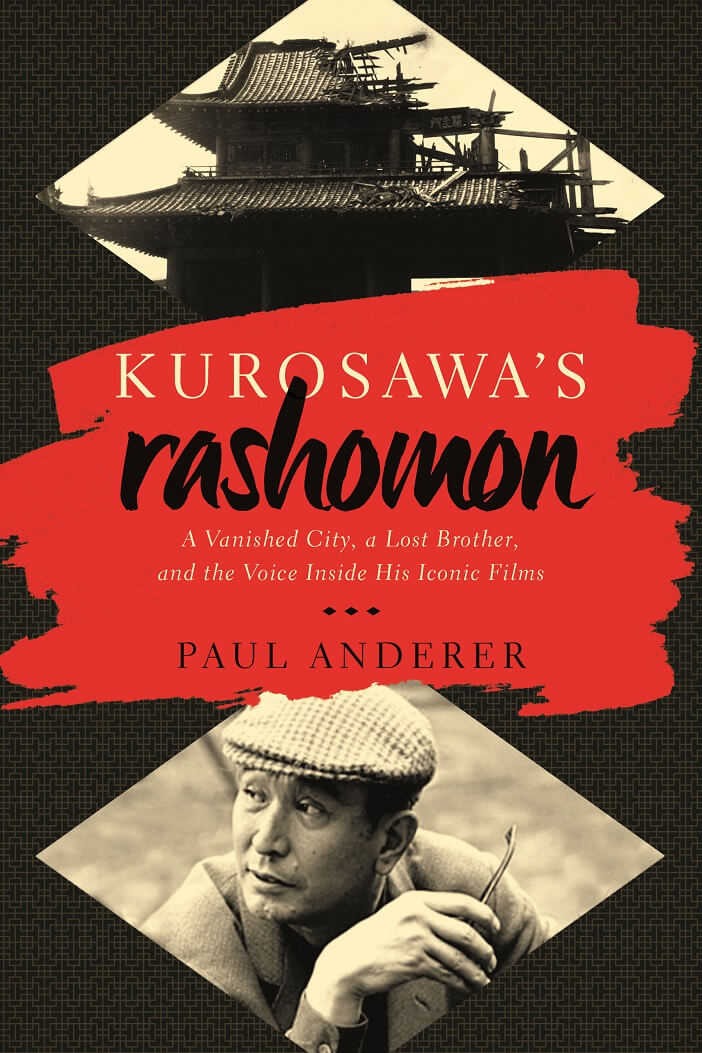22 Sep / Kurosawa’s Rashomon: A Vanished City, a Lost Brother, and the Voice Inside His Most Iconic Films by Paul Anderer [in Library Journal]

 When Rashomon won the Venice Film Festival’s Golden Lion in September 1950, the world embraced its director, Akira Kurosawa (1910–98), who quickly gained unrivaled prominence – Martin Scorsese, Francis Ford Coppola, George Lucas, and Steven Spielberg are a few of his self-declared disciples.
When Rashomon won the Venice Film Festival’s Golden Lion in September 1950, the world embraced its director, Akira Kurosawa (1910–98), who quickly gained unrivaled prominence – Martin Scorsese, Francis Ford Coppola, George Lucas, and Steven Spielberg are a few of his self-declared disciples.
Convinced “that Westerners are saps for samurai and geisha,” the surprised Japanese film industry nevertheless realized that with the international victory, “Rashomon … [broke] through a defeated nation’s barrier of shame” since WWII’s ignominious end. Beyond reaching iconic status and inspiring endless volumes of analyses and critiques, Rashomon has become “a key word of our time,” referring to the impossibility of knowing the truth and instead being confronted with multiple perceptions of what might have happened.
Paul Anderer (Mack Professor of Humanities, Columbia Univ.; Other Worlds: Arishima Takeo and the Bounds of Modern Japanese Fiction) turns that Rashomon effect on the film itself, presenting the inspirations and histories that went into its creation, including the pivotal consequences of the youthful double suicide of Kurosawa’s beloved older brother and his lover, writer Ryunosuke Akutagawa’s original texts, Japanese film history, Kurosawa’s films before and after, important collaborators’ reminiscences, and much more.
Verdict: In spite of a culturally provocative premise, the narrative repeats and temporally wanders often; moreover, the text’s assumed familiarity with Kurosawa’s films suggests general audiences are unlikely to have the sustained interest to finish.
Review: modified from “Nonfiction: Performing Arts,” Library Journal, September 15, 2016
Readers: Adult
Published: 2016
